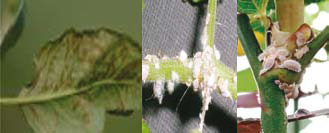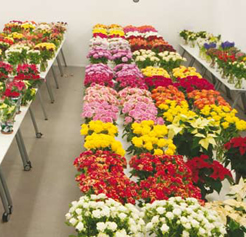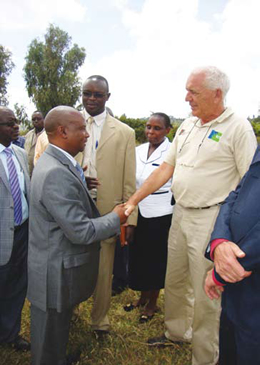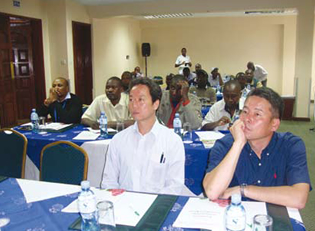There is a chance that even as you read this third rate column I’m facing a commission of enquiry investigating my character for the last six months. The commission most likely to be chaired by my father in-law with his first born, as the lead counsel will have the mandate to probe, investigate and recommend to the whole chain of Eve’s descendants if I’m a man enough to take care of their daughter.
As I fix these words to make some sense, the hosts of divorcees are knocking my door. This has nothing to do with being incapacitated to perform my duties as a husband but it is purely malice from the enemies of my family developments. But it can all be blamed on IFTEX, the self-proclaimed international exhibition. It all started when they requested the first lady to open the 4th show in Kenya.
She caused all this because I had informed Officerless, the Eve’s descendant I swore in front of a mammoth crowd that I will never look left, right or backward when am walking with her till death does us apart that all roses grown in Kenya are for export. I had convinced her that the only time Kenyans are allowed to buy roses is during valentine and funerals.

 Mealybugs in Kenya were original pests that attacked the coffee plants in the eighties but as the flower and rose growing industry begun to thrive, the pests found a new host and were transferred through to roses from the coffee bushes through coffee stakes that were used to hold the rose beds together and as well through grafted roses.
Mealybugs in Kenya were original pests that attacked the coffee plants in the eighties but as the flower and rose growing industry begun to thrive, the pests found a new host and were transferred through to roses from the coffee bushes through coffee stakes that were used to hold the rose beds together and as well through grafted roses. Flower production costs in Kenya have increased significantly due to outbreak of disease like downy mildew, powdery mildew and botrytis and since this has become a limiting factor for production, it has become a concern for the investor.
Flower production costs in Kenya have increased significantly due to outbreak of disease like downy mildew, powdery mildew and botrytis and since this has become a limiting factor for production, it has become a concern for the investor. Helping reconstruct a street boy emerging from the tough life in the Kenyan streets is not about the talk, it’s about the walk. It’s not about the what, it’s about the how. And it’s never about the will, it’s about the will. But how can you get it right if you are on the wrong part of the world? Naivasha Horticultural Fair is doing it again this year. Their generous contribution in many areas has helped enormously. They have involved themselves in plentiful charitable projects which are of great help to the community at large.
Helping reconstruct a street boy emerging from the tough life in the Kenyan streets is not about the talk, it’s about the walk. It’s not about the what, it’s about the how. And it’s never about the will, it’s about the will. But how can you get it right if you are on the wrong part of the world? Naivasha Horticultural Fair is doing it again this year. Their generous contribution in many areas has helped enormously. They have involved themselves in plentiful charitable projects which are of great help to the community at large. Expectations filled the air as one of the biggest chemical companies in the world, Arysta LifeScience, launched a fungicide for the control of Powdery mildew and botrytis and an insecticide for the control of all major insects mainly aphids, thrips, whiteflies, mealy bugs and hoppers and a miticide.
Expectations filled the air as one of the biggest chemical companies in the world, Arysta LifeScience, launched a fungicide for the control of Powdery mildew and botrytis and an insecticide for the control of all major insects mainly aphids, thrips, whiteflies, mealy bugs and hoppers and a miticide. Corporations often need to exhibit at simultaneous trade shows in different localities and for different reasons. They may even have two trade show exhibits in the same city at the same time. Going one step further, a company may even have two separate trade show exhibits at the same trade show. Flower suppliers are an example of a companies exhibiting at two trade shows. Why does this happen?
Corporations often need to exhibit at simultaneous trade shows in different localities and for different reasons. They may even have two trade show exhibits in the same city at the same time. Going one step further, a company may even have two separate trade show exhibits at the same trade show. Flower suppliers are an example of a companies exhibiting at two trade shows. Why does this happen?
 In the Best Flowers Quality Awards for Breeders under the category of Roses, the Platinum Award was clinched by De Ruiter East Africa Ltd with the standard rose “Rhodos”. De Ruiter East Africa’s red rose Rhodos, took center-stage during this year’s IFTEX with elaborate displays and much attention from show visitors. Rhodos is a premium rose with a clean red hue and good shape. The rose enjoys significant market presence and is currently regarded as one of the best reds out of Africa. Rhodos has an average stem lenght of 80cm and above, and a vaselife of up to 15 days. It grows a headsize of average 5cm at 1700 altitude.
In the Best Flowers Quality Awards for Breeders under the category of Roses, the Platinum Award was clinched by De Ruiter East Africa Ltd with the standard rose “Rhodos”. De Ruiter East Africa’s red rose Rhodos, took center-stage during this year’s IFTEX with elaborate displays and much attention from show visitors. Rhodos is a premium rose with a clean red hue and good shape. The rose enjoys significant market presence and is currently regarded as one of the best reds out of Africa. Rhodos has an average stem lenght of 80cm and above, and a vaselife of up to 15 days. It grows a headsize of average 5cm at 1700 altitude.